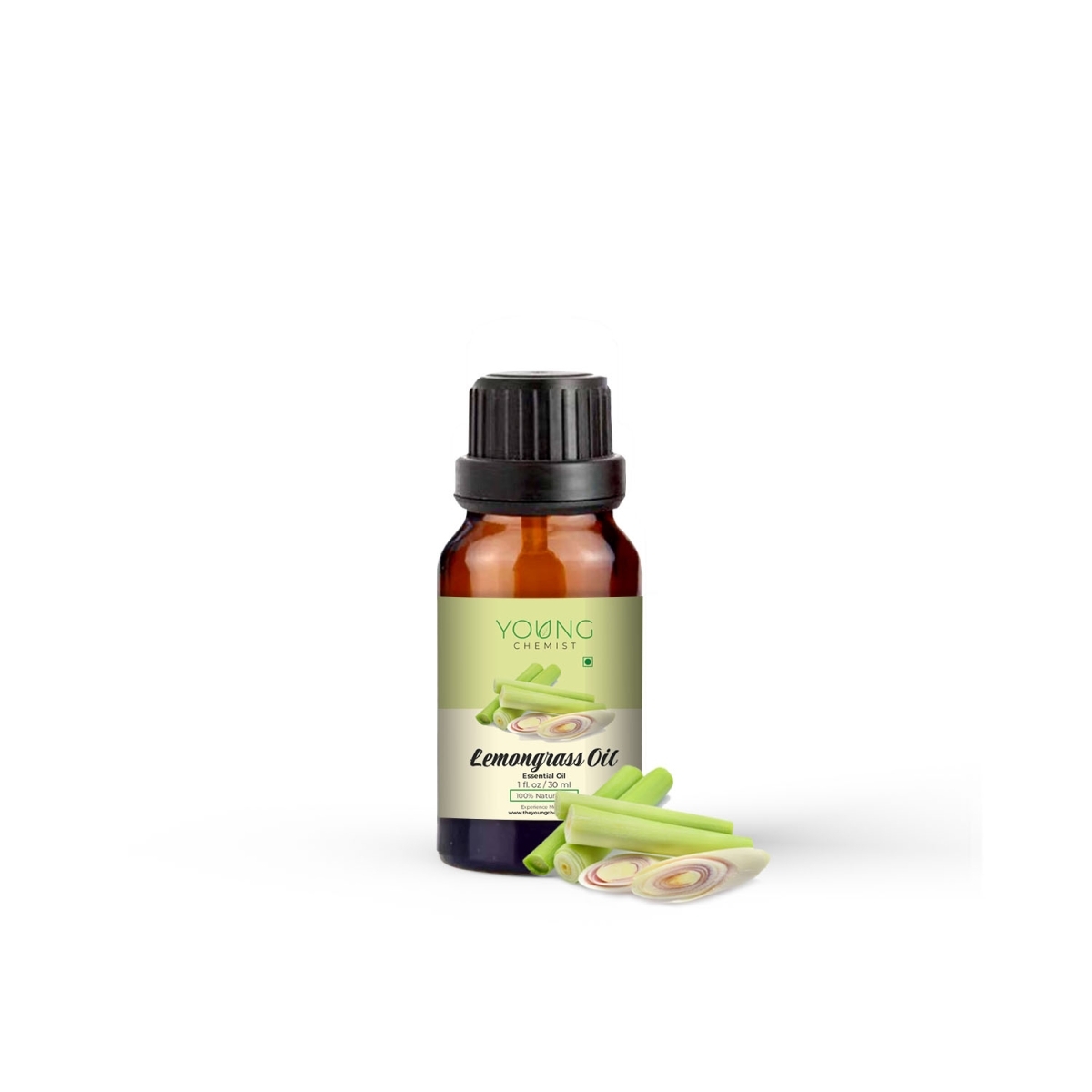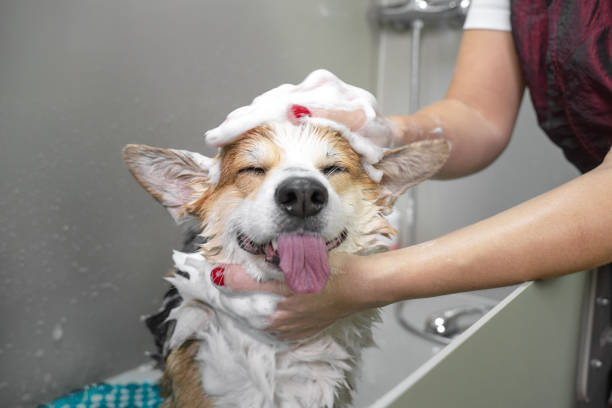Lemongrass Oil: Uses & Benefits | Lemongrass Essential Oil
Lemongrass oil benefits are wide-ranging; it can help with a variety of skin & hair care. What is the difference between lemongrass and lemon oil? Dive in!
#lemongrassessentialoil
https://www.cliganic.com/blogs/the-essentials/lemongrass-oil-uses-and-benefits
Lemongrass oil benefits are wide-ranging; it can help with a variety of skin & hair care. What is the difference between lemongrass and lemon oil? Dive in!
#lemongrassessentialoil
https://www.cliganic.com/blogs/the-essentials/lemongrass-oil-uses-and-benefits
Lemongrass Oil: Uses & Benefits | Lemongrass Essential Oil
Lemongrass oil benefits are wide-ranging; it can help with a variety of skin & hair care. What is the difference between lemongrass and lemon oil? Dive in!
#lemongrassessentialoil
https://www.cliganic.com/blogs/the-essentials/lemongrass-oil-uses-and-benefits

WWW.CLIGANIC.COM
Lemongrass Oil - Uses and Benefits
Lemongrass oil benefits are wide-ranging; it can help with a variety of skin and hair care. This article covers the following topics: Essential oils overview How the oil is made and its fragrance profile The difference between lemongrass and lemon oil Lemongrass essential oil benefits How to use lemongrass essential oil in a diffuser, and improve hair and skin Whether lemongrass is safe to use with dogs Safety and precautions Why you should choose Cliganic essential oils Where to buy lemongrass oil. Essential Oils Overview Essential oils are concentrated versions of the natural oils found in plants and trees. The oils come from the leaves, fruits, bark, flowers, seeds, roots, or resins. Most essential oils are extracted by steam distillation. However, essential oils made from citrus fruits use a process called cold pressing. Essential oils have been used in various cultures for thousands of years. The ancient Egyptians incorporated essential oils throughout their daily lives. Essential oils are a central element of Indian Ayurvedic medicine—the oldest system of medicine in the world. Essential oils were also used in ancient Greece, Rome, and China. Today, essential oils are still valued for their aromatic and cosmetic qualities. Aromatherapists use essential oils to promote health and well-being. Many people use essential oils for hair and skin care, and to clean their homes. What Is Lemongrass Essential Oil? There are approximately 55 different types of lemongrass species—a perennial grass that thrives in tropical climates. Two of the species used in essential oils are Cymbopogon citratus (West Indian grass) and Cymbopogon flexuosus (East Indian grass). Cymbopogon flexuosus is the type used in Cliganic’s lemongrass oil. Lemongrass essential oil is extracted via steam distillation from the fresh and partly dried lemongrass leaves and stems. The aroma of lemongrass oil is extremely strong—a little bit goes a long way. It can quickly overpower other oils if not used in the right amounts. The scent is described as fresh, lemony, grassy, earthy, and sweet. Most people find the aroma attractive. (Bees also find it attractive because the oil mimics the pheromone produced by honeybees. Using lemongrass oil can encourage bee colonies to move into a particular place. However, using the oil won’t necessarily mean you’ll be swarmed by bees!) Lemon vs Lemongrass Essential Oil Lemongrass and lemon oil are completely different essential oils—although both have a lemony scent. While lemongrass oil is steam-distilled from a species of grass, lemon oil is cold-pressed from lemon peels. They also have different chemical make-ups. In addition, lemon oil is phototoxic, while lemongrass is not. (Phototoxic means you shouldn’t expose yourself to sunlight or tanning beds within 12 hours of using it on your skin.) However, lemongrass does have a significant risk of skin sensitization. See the safety and precautions section for more details. What Is Lemongrass Essential Oil Good For? If you’re wondering, “What is lemongrass oil good for?”, you’ll be glad to know that oil’s benefits are numerous and wide-ranging. Although people often focus on using the oil to repel mosquitos and fleas, it does many other things as well. So what does lemongrass essential oil do? It can: Promote feelings of calm when used in diffusers Make hair look thicker Clean pores Relax muscles What Is Lemongrass Essential Oil Used For? This section on lemongrass essential oil uses provides numerous tips and techniques on how to use lemongrass oil, including information on how to make lemongrass essential oil blends. Lemongrass essential oil blends well with oils in the citrus, wood, mint, and herbaceous families—including cedarwood, sandalwood, lavender, lemon, and helichrysum. When creating an essential oil blend, follow these guidelines. Place the oils in a dark bottle (preferably amber-colored) to protect them from light. A two-ounce bottle should work for most recipes. After combining the oils, label the bottle with the ingredients, date, and intended use. Store the bottle at room temperature or in the refrigerator away from light and heat. Be sure to put the cap back on immediately after use as oxygen can affect an oil’s composition. Shake well before each use to combine the oils. Diffusing Lemongrass Essential Oil Lemongrass essential oil diffuser benefits include reducing tension, promoting feelings of calm, and freshening the air. Most lemongrass oil diffuser blends include words like relax, calm, and refresh. Here are some blends to try in your diffuser. Be sure to follow the manufacturer’s guidelines for use. Relaxing Blend 3 drops lemongrass 3 drops sandalwood Calming Blend 3 drops lemongrass 3 drops lavender Refreshing Blend 3 drops orange 1 drop lemongrass 1 drop peppermint Mind Blend 4 drops lavender 2 drops peppermint 2 drops lemongrass Clear Breathing Blend 2 drops lemongrass 2 drops lavender 2 drops eucalyptus Lemongrass Oil for Hair Lemongrass oil benefits for hair include adding shine. The benefits of using lemongrass essential oil for hair has made lemongrass a popular ingredient in hair care products. To make your own version, add two drops to a tablespoon of your regular shampoo and conditioner. Here are a few more recipes to try. Lemongrass and Tea Tree Oil Shampoo/Conditioner To harness the dual power of lemongrass and tea tree oil, add the oils to your shampoo or conditioner using the amounts below. 1 tablespoon shampoo/conditioner 2 drops tea tree 1 drop lemongrass Hair Rinse Mix ingredients and apply to hair. Leave on for 10 minutes and rinse. Use up to two times weekly. 1 cup distilled water ½ cup apple cider vinegar 2 to 3 drops lemongrass Lemongrass Hair Oil Combine oils and shake well. Apply to hair and cover with a shower cap or warm towel. Leave on for 15 minutes and then wash hair. 3 tablespoons jojoba oil 3 drops lemongrass Lavender, Lemongrass and Tea Tree Oil Shampoo Thoroughly clean an old shampoo bottle and combine ingredients below and mix thoroughly. 2 cups organic shampoo base (Stephenson is a popular brand) 1 tablespoon jojoba oil 5 drops lemongrass 5 drops lavender 5 drops tea tree Lemongrass Oil for Skin Although it is safe to use lemongrass essential oil for skin, it causes more allergic reactions and skin sensitization than other oils. Therefore, read the safety and precautions section below before trying any of these recipes on your skin. Lemongrass oil is ideal for cleansing pores. In fact, most uses focus on using lemongrass oil for face, rather than as a massage oil. Lemongrass Oil for Face Combine ingredients and mix well. Store in a dark-colored container with a tight-fitting lid. Apply with fingertips or Q-tips. ¼ cup aloe vera gel 10 drops geranium 10 drops lavender 6 drops lemongrass 6 drops tea tree Oil Controlling Toner Combine ingredients in an 8-ounce bottle and shake well before each use. 1 cup distilled water 2 teaspoons witch hazel 6 drops lemongrass Gentle Face Scrub Combine ingredients and mix well. May need to mix with a fork. Store in 4-ounce glass jar with tight-fitting lid. Apply to clean face in circular motion, and then rinse, tone, and moisturize. 5 ½ tablespoons baking soda 2 1/2 tablespoons jojoba oil 6 teaspoons water 8 drops lavender 8 drops frankincense 6 drops lemongrass 4 drops rosemary Benefits of Lemongrass Essential Oil Lemongrass has a long history of treating various ailments, such as fevers, headaches, indigestion, and muscle pain. Below are recipes for each application. Cool and Comfort Combine ingredients, shake well before each use, and apply to chest area. 2 teaspoons jojoba oil 1 drop lemongrass Mind Combine ingredients, shake well before each use, and apply to temples and back of neck. 1 ounce jojoba oil 4 drops lemongrass Stomach Combine ingredients, shake well before each use, and massage abdomen in a gentle circular motion. 1 tablespoon jojoba oil 2 drops lemongrass 2 drops peppermint Relax Muscle Combine ingredients, shake well before each use, and apply to affected areas. 2 teaspoons jojoba oil 1 drop lemongrass Is Lemongrass Oil Safe for Dogs? Many pet owners wonder if it is safe to use lemongrass oil for dogs—particularly whether they can use lemongrass oil for fleas. Although lemongrass can be safely used on dogs, it is critical to use a medical-grade brand of oil and introduce and use the oil appropriately. We recommend talking with your veterinarian or seeking guidance from a holistic vet before using any essential oil with your dog. Also keep in mind that several essential oils have caused serious health problems in dogs. Dogs are scent-driven and have a much more sensitive sense of smell than humans. What may seem mild and pleasant smelling to a human, may be very overwhelming and irritating to a dog. In addition, dogs might inhale or lick essential oils and have different reactions depending on the size and breed of the dog. Finally, no studies have demonstrated that essential oils are an effective method of flea and tick control for dogs. Lemongrass Essential Oil Safety and Precautions Lemongrass essential oil side effects include skin sensitization (bright red rashes on light skin and darker areas on dark skin). In addition, lemongrass tends to cause more allergic reactions in people than other essential oils. For this reason, the oil should be diluted to levels no greater than 0.7%. We recommend using a 0.5% dilution rate (1 drop of oil per 2 teaspoons of carrier oil). Don’t use lemongrass oil on damaged skin, with children younger than 2, or while pregnant. Don’t use undiluted essential oils on your skin. Dilute them with a carrier oil first (Cliganic’s 100% organic cold pressed jojoba oil is an ideal choice). For lemongrass, do not exceed a 0.5% dilution. Perform a patch test to check for allergic reactions. Don’t use an essential oil diffuser for longer than 20 to 30 minutes. Don’t use essential oils near eyes or mucous membranes. Store essential oils out of reach from children and pets. Do not ingest essential oils. Wash your hands after using essential oils. Why Choose Cliganic Lemongrass Essential Oil? We believe that Cliganic has the best lemongrass essential oil on the market, and we think you’ll agree. Cliganic’s lemongrass essential oil stand apart because of our commitment to purity, organic materials, and quality packaging. Our oils are manufactured and packaged to the highest standards. Our bottles are made of premium dark amber glass—the best container for protecting oils from UV light. Each bottle has a German dropper cap, which gives you better control when dispensing the oil. This cap reduces waste and accidental spillage—making it the perfect choice for DIY recipes. Where Can I Buy Lemongrass Oil?
0 Σχόλια
0 Μοιράστηκε
127 Views
0 Προεπισκόπηση












